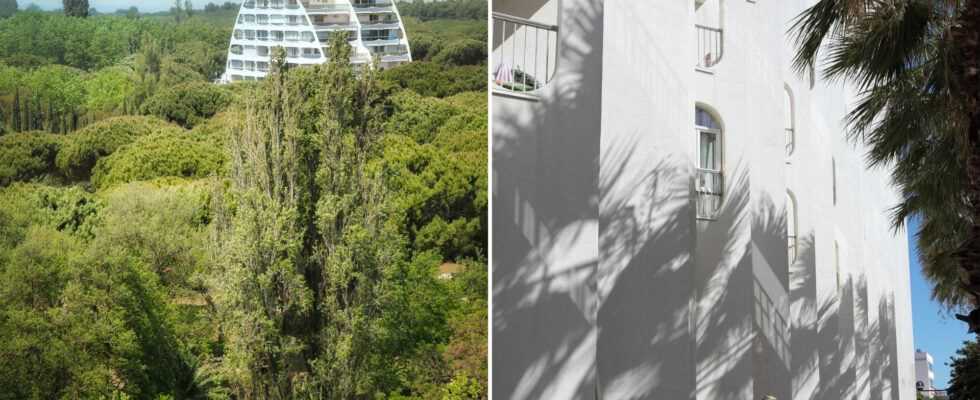ReportingCreated from scratch in the early 1960s, the Hérault seaside resort is today as it was thought: bathed in greenery. Plane trees, cypresses and giant pines have imposed themselves between the concrete pyramids.
Can you love La Grande-Motte without first doing a bit of history? First criticized, then despised, long snubbed, the flagship resort of Hérault, very close to Montpellier, is entering its maturity. In 1956, the third week of paid vacation launched the French to attack the Spanish stations built by the Franco regime. To stop this bleeding and fix holidaymakers under the sun of the Gulf of Lion, the Racine mission (interministerial mission for tourist development of the Languedoc-Roussillon coastline), a large Gaullian machine, proposes to develop the wild coasts that go from Gard in the Pyrénées-Orientales. La Grande-Motte will be the flagship of this set of five “tourist units”.
In the center, the tallest needles now dominate the two or three-story buildings that line the axes.
Before the first shovel in 1964, the site was hostile: a flat country crushed by summer heat, low lands – the sansouïres – flooded by winter storms, swarming mosquitoes and winds blowing in all directions, and sometimes very violently. It is probably because the very low dune cordon was higher at the location of the current zero point – between the big wheel and the thalasso – that the farm that there was there, then the new town, were called “large motte”. La Grande-Motte, with capital letters, does not therefore succeed a “small fishing village”: it is a new town in the purest sense of the term, born from nothing.
Today, the harshness of the wild nature and decades of construction has given way to softness: the pyramids break the winds, the shade of the trees keeps cool in summer, the before and the end of the season warm up. at the same rate as the planet (but we are not happy about that). Mosquitoes are more or less mosquito repellent. There is nothing to visit as such in La Grande-Motte: the monument is the town itself. The beach is as simple as a line, wilder on the Grand Travers side, narrower on the town side. La Grande-Motte can be experienced by bike or on foot, like a city experience (almost) without a car ahead of time.
From Eden to Acapulco
But what has changed the experience of the city in recent years is the full maturity of the trees planted half a century ago, which leads to an unprecedented sensory inversion: green has won! From the splendid Saint-Augustin church to the pyramids via the villa district, the plane trees, the Leyland or Lambert cypresses and especially the maritime, pinion or Aleppo pines have won the battle for concrete. The pines, sometimes 15 meters high, completely transform access to the city: we have the feeling that the road was built in the forest, even though they were built together. In the center, the highest needles now dominate the two or three-storey buildings that line the axes and are thus drowned in greenery.
You have 60.69% of this article to read. The rest is for subscribers only.
